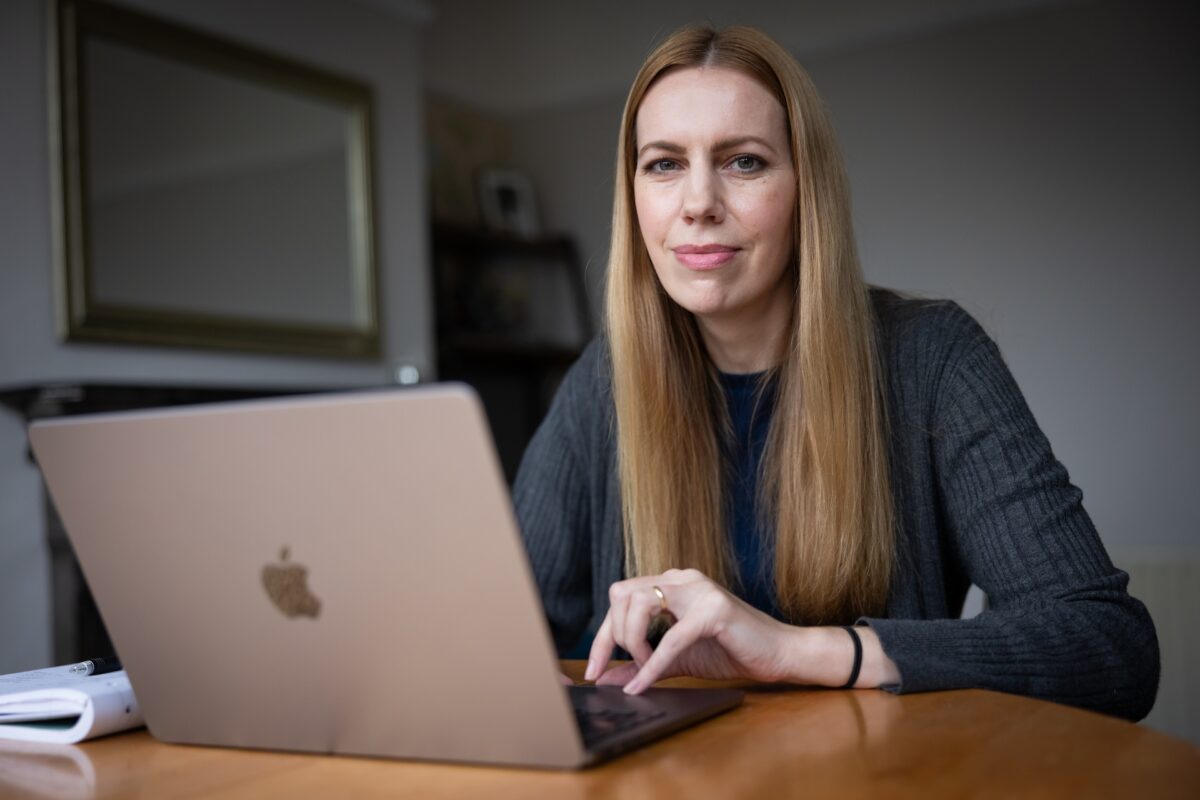Designing A More Equitable Future: IWD 2023

This year’s International Women’s Day theme is ‘Embrace Equity’, which aims to get the world talking about why “equal opportunities are no longer enough.”
Whilst it sounds an awful lot like equality, to be equitable means organisations need to look deeper into their business practices and design processes that are tailored to the employee’s diverse individual needs.
To learn more about how this can be done, we spoke to 10 professionals to gain their insight into a more equitable future.
Empower Women in Leadership Roles
For the world to fully ’embrace equity,’ our organisations must implement changes, starting at the top. Companies, particularly in the tech sector, need to ensure that women are given an equal opportunity to attain and succeed within these leadership roles, helping to break the glass ceiling for others.
As Alexis Suggett, Contracts Director and Data Protection Officer at Cubic Transportation Systems, explains, “we need to help women feel confident and supported in succeeding in what is often a predominantly male environment. Organisations should be examining their progression pipelines, considering: Are there succession and progression opportunities for women? Do we have a diverse leadership team?”
“Tech remains a male-dominated industry. These barriers won’t ever disappear, but we can minimise them as more female leaders break the glass ceiling, inspiring others to do the same,” highlights Tanja Omeragic, Director of Technical Sales – Cybersecurity at ConnectWise. “Organisations can support this aim by increasing awareness of the possibilities for women in tech, and by encouraging its leaders to mentor other women in the workplace.”
A Sy-STEM-ic Issue
However, whilst putting women into these leadership roles is essential, society must also ensure that the next generation of women is empowered to take on these roles, particularly in STEM.
“Only 28% of STEM (science, technology, engineering, and maths) jobs are held by women, and men outnumber women in most STEM undergraduate degrees,” states Gal Heminski, Co-Founder and CTO of PlainID. “The encouragement of women to study STEM at a young age provides a variety of perspectives that can foster creative solutions and attract a wide range of clients.”
Caroline Seymour, VP of Product Marketing at Zerto, vocalises their support: “We need to do far more. Mentoring girls and encouraging them to pursue STEM coursework into higher education is a start. Opportunities such as classes and scholarships that cater to girls interested in the field are also important. It’s vital to support young women early in their life so they have the background, support, and confidence to overcome gender biases in STEM.”
“Just a couple of minutes on Google will show the important role that women have played in the STEM sectors historically,” identifies Vikki Woodford, Head of Product Operations at Tax Systems. “Our girls need to know they can do whatever they want to do providing they put in the leg work, and gender, race, religion, or preferences shouldn’t be part of that decision.”
But to empower these women in STEM, there need to be more role models in organisations, as Hugh Scantlebury, CEO and Founder of Aqilla, examines: “Young girls interested in maths and excited by the opportunities within the financial sector need visibility of women in senior leadership positions so that they have something to aspire to.”
The architects of an internal strategy
One of the key ways organisations can become more inclusive and equitable is by providing tailored support to individuals with their internal strategies. Through these initiatives, organisations can offer the optimal landscape for women to attain success within their roles.
“It’s important for companies to identify when and why women are falling behind and implement better policies and practices to correct it, all with measurable outcomes,” suggests Ciara Harrington, CPO at Skillsoft. “For example, introducing policies promoting equality in hiring and promotion, mentoring and coaching programs specifically for women, and market-leading parental leave policies.”
“With women making up only 19% of the technology workforce, it’s clear that there is still a lot of work to be done,” details Dr Shirley Knowles, Chief Inclusion and Diversity Officer at Progress. As such, organisations must ensure that they are implementing practical initiatives year round that will make a real difference. I would encourage every organisation to consider what they can do to close the gender gap in STEM, and take action.”
Nurit Belorai, Go-To-Market Manager at Aqua Security, confirms that “organisations should provide equal opportunities for career advancement, promote diversity and inclusion, and offer mentorship and sponsorship programs. At the end of the day, it’s all in the people, and I believe that if the company culture values and respects the contributions of women in its core, a lot of the above can happen organically.”
As Jennette Skaggs, Senior Field Enablement Manager at Progress and Co-Leader at Progress for Her, explains, these internal networks can provide valuable support to women within the organisations. “By encouraging discussion of complex issues, inviting women plus adding our allies to the conversation, we show that the group’s leadership and colleagues are invested in that professional, and sometimes personal, leadership-building growth. Sharing our stories empowers all toward a more equitable environment.”
Running through the hurdles
Once these obstacles have been tackled, the last but often the most formidable challenge is for people to face their own hurdles. This can take the form of self-esteem, confidence, or courage, but when challenged can push people into growth.
“I think it’s important that women aren’t afraid to push for change in their careers. Personally, I have changed my career four times, and three times within the IT sector,” Soffia Dron, Delivery Director at Intellias, said. “You are in power of your own success: surround yourself with people that value you, dare to change your environment, and be motivated to discover new things and change yourself.”
As Nicola Kinsella, SVP of global marketing at Fluent Commerce, summarises, “embracing equality involves action. So, look for tangible ways to involve your company in the fight to advance equal opportunities for all to celebrate this year’s #InternationalWomensDay.”











I appreciate the examples you provided, showcasing real-world initiatives and organizations that are making a positive impact. It’s heartening to see how collaboration and innovation can lead to meaningful change.
ravi @ https://www.cientra.com/